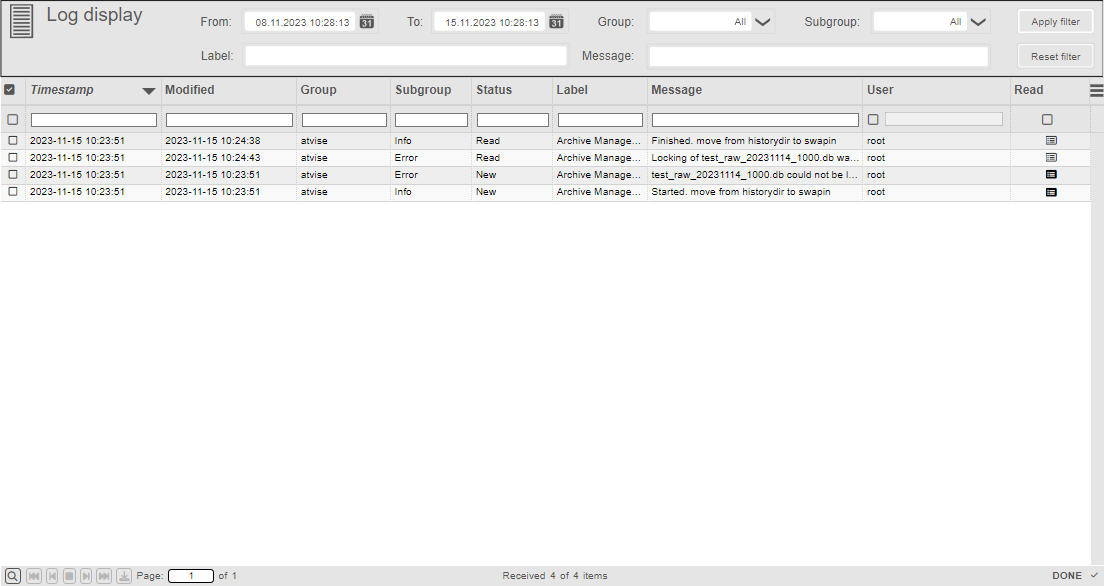Logger¶
The logger is meant for logging (error) messages. Messages (=log entries) are stored on historized nodes and can be displayed via the log view object display. The name of the nodes is defined by the group and subgroup of the respective log entry.
Hint
A group must not exist without a subgroup.
Configuration
The following path must be defined for the logger:
OBJECTS ‣ ATVISE ‣ Logger
The following structure must be used for writing log entries (see also access control - visualization rights):
OBJECTS ‣ ATVISE ‣ Logger ‣ Group ‣ Subgroup (historized)
atvise (e.g. the archive management) uses the following default settings for writing log entries:
Group: atvise
Subgroup: error, warning, info
Writing log entries
The quick dynamic write log entry can be used for writing log entries.
Display
All occurred messages can be displayed via the Log View object display. The filters on top of the table allow to define which messages shall be displayed.

The table provides the following information:
Timestamp – Shows when the message occurred
Modified – Shows the time of the last change by the user
Group
Subgroup
Status – The current status of the message (new, read)
Label – Allows a further classification of the message (atvise uses the module name by default, e.g. archive management)
Message – Provides further information regarding type or cause of log entry
User – Name of the logged in user. Anonymous if no user is logged in
Read – Clicking the button of the respective log entry changes the status to read
The displayed data can be filtered by using the input fields of the respective columns. The checkbox next to an input field allows to switch the filter mode. If the checkbox is active, a specific filter for the respective column can be entered. In this case, it is also possible to filter for empty fields, e.g. in order to find the user Anonymous. If inactive, all entries are displayed. The filter checkbox can be configured via filterCheck parameter.